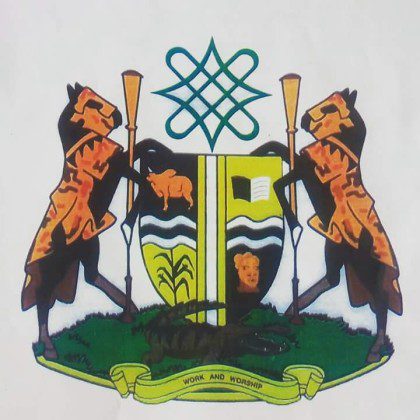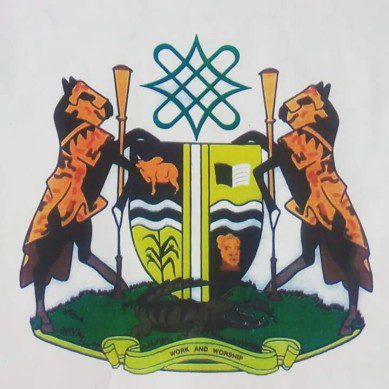National Issues
Kaduna State Logo Law Must Be Amended -By Sunday Isuwa


The process and procedures that brought about this logo were faulty. It will be incumbent on the good members of Kaduna State House of Assembly and other members of the society to ensure that this logo is taken back to the House of Assembly for amendment if the governor signs it into law. With this, many lawmakers and other members of the society will be given the opportunity to contribute their quota in producing a logo the people will truly call their own.
The haphazard passage into law, of an executive bill sponsored by Kaduna State Governor, Malam Nasir Ahmad El-Rufai, for the creation of a Logo for Kaduna State, has created furor.
The logo in its features show inconsistency and repetition and cannot be adopted in civic education, as the Chairman, State House Committee on Judiciary, Irimiya Ishaku Kantiok acknowledges that the over 6.3 million people of Kaduna had no input into the creation of the New Logo, having failed to call for a public hearing on it.
For people who follow political activities, especially from the Lugard Hall where members of the legislative arm meet, the passage of a very important bill for the creation of a logo containing some features of the state without inputs from people of the state was a big legislative error.
The distinctive features of the logo and the process that led to the passage of the bill have left many wondering whether the first class student, Malam Nasir El-Rufai, who is now the governor of Kaduna State actually went through the bill and forwarded same to the members of the Kaduna State House of Assembly.
Its passage by the members of the state House of assembly without doing the needful also speaks volume of the quality of representatives the acclaimed centre of learning is producing.
There is no legal injunction restraining Kaduna State from having a logo. States are free to have their flags and other important symbols. So, it was not out of order that the Kaduna State governor initiated such an important bill. The question is that of whether indeed the majority had their say in it, as is the norm in a democracy.
Before Nigeria’s independence, the committee saddled with the responsibility of providing a flag, National Anthem and other important symbols of state for the country did not only call for public hearings, but competitions were organised and thrown open to all Nigerians. Various submissions were made. A serious selection process was also carried out which gave Nigeria something to be proud of.
In Kaduna, the process that led to the passage of the logo bill into law is still shocking. It has only succeeded in giving Kaduna a logo with inconsistent, incoherent and repetitive features, as earlier mentioned. For people who were privileged to go through the bill as passed, they have called for an urgent repeal of the law after the governor’s assent.
It was reliably gathered that after the governor forwarded the bill for a law to create a logo for Kaduna State, the normal procedure of reading it for the first time was followed. The bill was also read for the second time and referred to a joint committee. The committees and members initially drafted for the assignment included those from the Judiciary, Youth, Sport and Culture, Commerce, Industries and Tourism. Later, all the committees drafted for the assignment were withdrawn, leaving only that of Judiciary, headed by Irimiya Ishaku Kantiok and his deputy, since the House committees have not been constituted.
Even though many have queried the withdrawal of other committees in this very important assignment, the Judicial committee, made up of two people denied over 6.3 million people their inputs in an official insignia and symbol to be used by the entire government establishments, bureaus, public institutions and colleges, schools and all bodies established by the Kaduna State government.
Either by act of commission or omission, the committee’s refusal to organise a public hearing, referring the bill for reading for a third time and its subsequent passage with so much errors makes a lot of people in Kaduna State wonder about the motive behind this.
The first distinctive feature of the logo is the Motto: Work and Worship. A lot of people have no qualms with that, considering the religious and hardworking nature of the people of Kaduna State.
The second feature in the logo highlighted is Green Vegetation: Agriculture, Economy, Abundance and Conservation are mentioned. Kaduna is known for its rich agriculture and contribution towards boosting the nation’s economy. But the lawmakers and the bill drafter fail to explain to the people the ‘Abundance’ they are talking about.
The inconsistent nature of the bill, it’s voluminous features and repetitive descriptions makes it difficult for such to be introduced into primary and secondary schools curriculum as part of civic education. Looking at the entire logo, can a student or his teacher comfortably draw it in a class? The logo needs to be simplified.
The third feature of the logo is a Crocodile: According to the drafters, crocodile stands for Strength, Resilience, Indestructibility and Ancestry. The lawmakers and the bill’s sponsor fail to acknowledge that there is nothing in this world that is indestructible. Kaduna State has witnessed the destruction of several lives and property as a result of terrorist attacks, cattle rustlers, ethnic and religious crises. This is a history the people can’t runaway from or forget at all.
The fourth feature is a Cattle: The lawmakers and the sponsor of the bill say Fertility, Abundance and Nourishment are what this feature represents. If one looks at it very well, there is a repetition of Abundance; which is being challenged.
The fifth feature of the logo is Nok: They make mention of History, Culture, Arts and Tourism. Are the lawmakers and the sponsor of the bill referring to the famous symbol of the Nok Terra-cotta? Even though Nok terra cotta represents the above mentioned, the sculpture in the Logo does not suggest the original Nok terra-cotta traded circa 500 BC. In fact, since the size of the logo will be reduced to fit in on the size of official files, the sign of the terra-cotta which represents a large chunk of ethnic groups won’t be visible when compared with other unimportant features that have been given prominence.
The sixth feature of the logo is a Crop plant. In crop, Agriculture and Economy are also mentioned. These are features earlier mentioned in green vegetation, thereby making the logo inconsistent and repetitive in nature.
The seventh feature is a Water Body: the sponsor of the bill mentions Life, Purity and Recreation. There shouldn’t be any objection to that because that is exactly what water represents.
The eighth feature of the logo is a Book: which stands for Education and Knowledge (Centre of Learning). This also is okay for many people.
The ninth feature is the Northern Knot: the sponsor of the bill mentions History, Tradition and Culture. These are features mentioned earlier. If there were proper synergies and public hearings, it would have saved these unnecessary repetitions. The knot is a pirated feature and meaningless on the Kaduna State logo.
There is no feature that suggests the Gbagyi are the earlier inhabitants of the capital city. Couldn’t the distinctive features have captured a woman carrying load on her shoulder to represent the original owners of the land?
The tenth feature is Kakaki: Culture and History are also mentioned as some of its features. Both culture and history have been featured earlier.
The eleventh feature the sponsor of the bill includes is a Banner: History and Way of Life is mentioned. Many are now asking whether the banner’s history is different from the several ones mentioned above? How many histories does Kaduna State have?
The twelfth feature included in the logo by the sponsor of the bill is: Two decorated black horses. Independence, Culture, History and Tradition are mentioned. Only Independence has not been mentioned earlier in the distinctive features of the logo. Both culture, History and tradition had already been captured. The two horses are pirated from the Nigeria coat of Arms.
The thirteenth feature included by the sponsor of the bill is the Shield, which stands for Safety and Protection. Looking at the logo, what is obtainable as shield is questionable. There is no handle in the acclaimed Shield even though it could be used for Safety and Protection.
Kaduna is now a state of its own and not the defunct capital city of Northern Nigeria. There is no feature that suggests the Gbagyi are the earlier inhabitants of the capital city. Couldn’t the distinctive features have captured a woman carrying load on her shoulder to represent the original owners of the land?
The inconsistent nature of the bill, it’s voluminous features and repetitive descriptions makes it difficult for such to be introduced into primary and secondary schools curriculum as part of civic education. Looking at the entire logo, can a student or his teacher comfortably draw it in a class? The logo needs to be simplified.
The process and procedures that brought about this logo were faulty. It will be incumbent on the good members of Kaduna State House of Assembly and other members of the society to ensure that this logo is taken back to the House of Assembly for amendment if the governor signs it into law. With this, many lawmakers and other members of the society will be given the opportunity to contribute their quota in producing a logo the people will truly call their own.
Sunday Isuwa, a journalist, writes from Kaduna and can be reached on isuwasunday@gmail.com



















